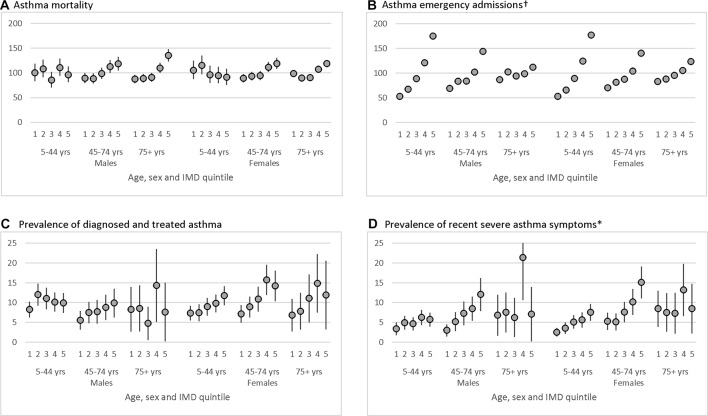Figure 1.
Socioeconomic status variations in asthma outcomes in England, standardised event ratios by Index of Multiple Deprivation (IMD; 1 is least deprived), sex and age-band, with 95% CI bars: (A) mortality 2002–2015, Office for National Statistics mortality; (B) emergency admissions 2001–2011, Hospital Episode Statistics; (C) prevalence of clinician-diagnosed and treated asthma 2010*, Health Survey for England 2010; (D) prevalence of recent severe asthma 2010*, Health Survey for England 2010. Footnotes. †95% CI too small to be visible. *Clinician-diagnosed-and-treated asthma; a combination of the questions: ‘Did a doctor or nurse ever tell you that you had asthma?’ AND ‘Over the last 12 months, have you used an inhaler, puffer or nebuliser prescribed by a doctor to treat your asthma, wheezing or whistling, or difficulty in breathing?’. Recent severe asthma; a combination of any of the following: in the last 12 months has had sleep disturbed one or more nights per week due to wheezing/whistling in chest, has found in the last 12 months chest wheezing ±whistling interfered with normal activities ‘quite a bit’ or ‘a lot’, has experienced symptoms of asthma ‘every day’ or ‘most days’, had difficulty sleeping one or more days due to usual asthma symptoms in the last week or had usual asthma symptoms during the day one or more days in the last week. Presented as simple prevalences (%) due to small numbers.

